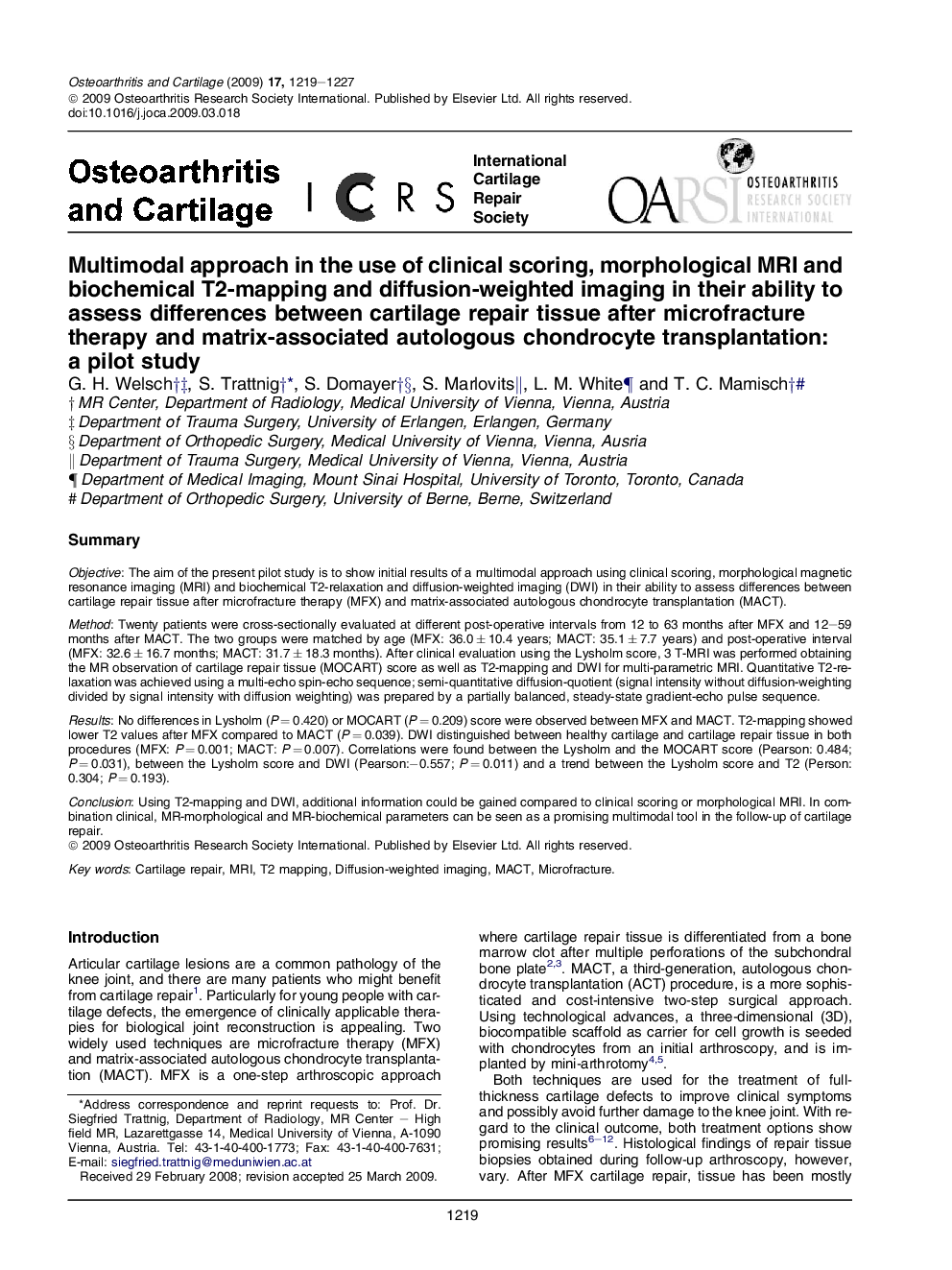| کد مقاله | کد نشریه | سال انتشار | مقاله انگلیسی | نسخه تمام متن |
|---|---|---|---|---|
| 3380669 | 1220219 | 2009 | 9 صفحه PDF | دانلود رایگان |

SummaryObjectiveThe aim of the present pilot study is to show initial results of a multimodal approach using clinical scoring, morphological magnetic resonance imaging (MRI) and biochemical T2-relaxation and diffusion-weighted imaging (DWI) in their ability to assess differences between cartilage repair tissue after microfracture therapy (MFX) and matrix-associated autologous chondrocyte transplantation (MACT).MethodTwenty patients were cross-sectionally evaluated at different post-operative intervals from 12 to 63 months after MFX and 12–59 months after MACT. The two groups were matched by age (MFX: 36.0 ± 10.4 years; MACT: 35.1 ± 7.7 years) and post-operative interval (MFX: 32.6 ± 16.7 months; MACT: 31.7 ± 18.3 months). After clinical evaluation using the Lysholm score, 3 T-MRI was performed obtaining the MR observation of cartilage repair tissue (MOCART) score as well as T2-mapping and DWI for multi-parametric MRI. Quantitative T2-relaxation was achieved using a multi-echo spin-echo sequence; semi-quantitative diffusion-quotient (signal intensity without diffusion-weighting divided by signal intensity with diffusion weighting) was prepared by a partially balanced, steady-state gradient-echo pulse sequence.ResultsNo differences in Lysholm (P = 0.420) or MOCART (P = 0.209) score were observed between MFX and MACT. T2-mapping showed lower T2 values after MFX compared to MACT (P = 0.039). DWI distinguished between healthy cartilage and cartilage repair tissue in both procedures (MFX: P = 0.001; MACT: P = 0.007). Correlations were found between the Lysholm and the MOCART score (Pearson: 0.484; P = 0.031), between the Lysholm score and DWI (Pearson:−0.557; P = 0.011) and a trend between the Lysholm score and T2 (Person: 0.304; P = 0.193).ConclusionUsing T2-mapping and DWI, additional information could be gained compared to clinical scoring or morphological MRI. In combination clinical, MR-morphological and MR-biochemical parameters can be seen as a promising multimodal tool in the follow-up of cartilage repair.
Journal: Osteoarthritis and Cartilage - Volume 17, Issue 9, September 2009, Pages 1219–1227